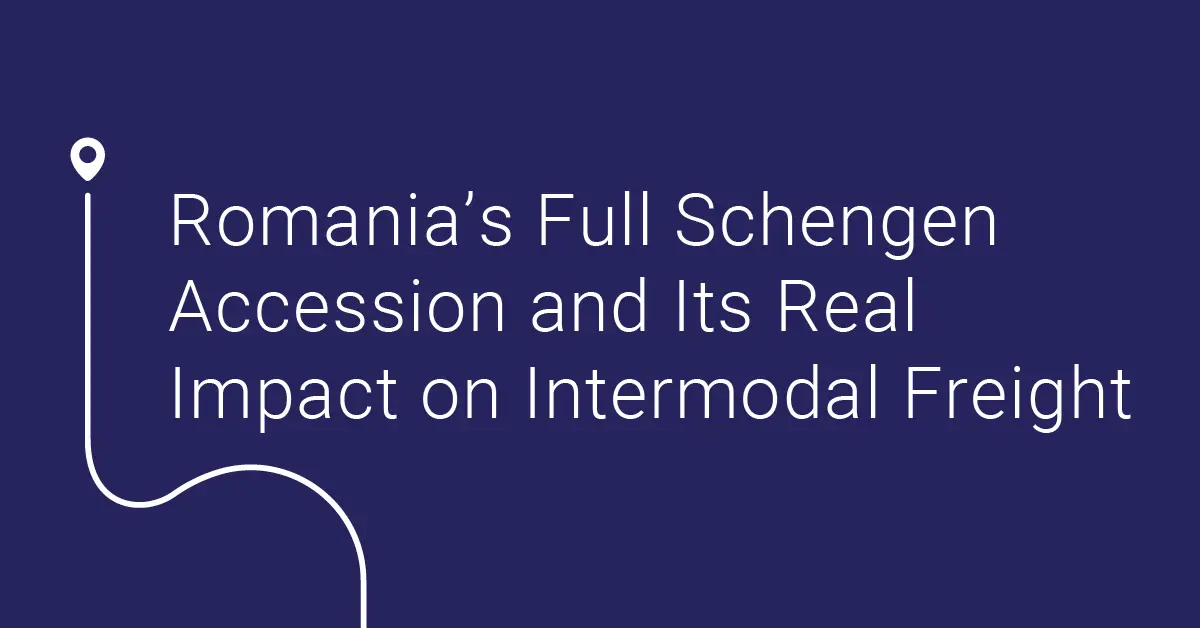As of January 1, 2025, Romania is fully integrated into the Schengen Area — including land borders. For logistics providers and exporters, this long-awaited milestone is a major step forward. In theory, removing border checks at key crossings like the Romania-Hungary corridor should streamline freight movement, reduce idle times, and make transit more predictable — especially for intermodal flows.
But how much has actually changed on the ground?
To get a clearer picture, we spoke with Dan Suciu, Intermodal Manager at GOPET ROMANIA, about the operational realities that companies like ours are seeing in the early weeks following full integration.
“The border controls are gone — that’s a fact,” Dan confirms. “But real-world transit times haven’t improved yet. That’s not due to policy, but rather to the fact that train volumes are still low, and the operating schedules haven’t caught up. We’re running at around 40% of normal traffic levels. Once those stabilize, we expect tangible gains.”
Some Progress — and Still Some Distance to Go
While the elimination of rail customs checks is already delivering localized benefits — such as time savings of around 12 hours per train at high-traffic entry points like Curtici — the broader system hasn’t fully felt the effect. This is largely because infrastructure and capacity issues are acting as a counterweight.
One example is the closure of the Biharkeresztes–Episcopia Bihor rail line, effective from April to July 2025, for modernization and electrification works. On top of that, the Oradea–Cluj line is undergoing long-term upgrades through 2026. These closures have led to rerouting of both conventional and intermodal freight traffic via Curtici, placing additional pressure on a corridor already operating near capacity.
Elsewhere in Europe, ongoing rail works in Hungary and Germany are also contributing to congestion and inconsistent service levels. As a result, the Schengen-related time savings are being absorbed by these detours and slowdowns, delaying the moment when we’ll feel the full efficiency gains in scheduled transit times.
“We won’t see rail operators shortening official schedules just yet,” Dan explains. “The border gains are real, but they’re covering for disruptions elsewhere in the system.”
Road Transport: Short-Term Advantage, Long-Term Complement
Interestingly, the situation has created a temporary edge for road transport, particularly for clients that need more flexibility or tighter lead times. With the land border now fully open, road carriers can avoid customs queues entirely, allowing for faster, simpler cross-border routing.
This shift is also contributing to a tightening supply of drivers for intermodal First/Last Mile services. As more drivers move toward long-haul trucking routes that now offer better turnaround and predictable schedules, intermodal capacity is feeling the squeeze — even as long-term demand for sustainable, rail-based solutions continues to grow.
At GOPET, we view this development as a transitional phase. Intermodal continues to offer long-term benefits, particularly as emissions regulations intensify and clients seek to future-proof their supply chains. But in the short term, road and rail will coexist as complementary tools, each offering value depending on the specific context of the shipment.
The Outlook: Schengen Is a Foundation, Not a Quick Fix
There’s no doubt that Romania’s Schengen accession marks a structural improvement in the regional logistics landscape. The ability to move freight across the border without customs checks opens new operational possibilities — from expanding First/Last Mile trucking into Eastern Hungary, to building more resilient cross-border flows.
However, true systemic change will depend on what comes next: restoring full train volumes, modernizing key corridors, and adjusting schedules to reflect the new borderless reality. That’s when the full promise of Schengen will translate into day-to-day competitive advantage for intermodal operators and their customers.
📩 Want to explore how intermodal or road solutions could support your cross-border supply chain under the new Schengen framework?
Write to us at hello@gopettrans.com – we’ll help you build a smarter route forward.

